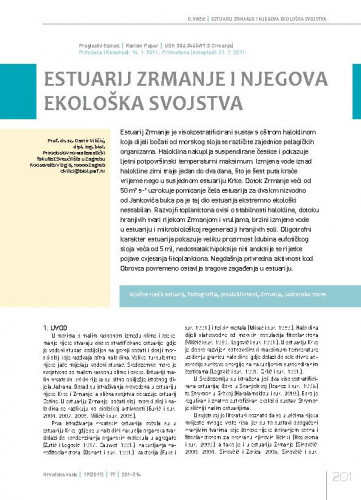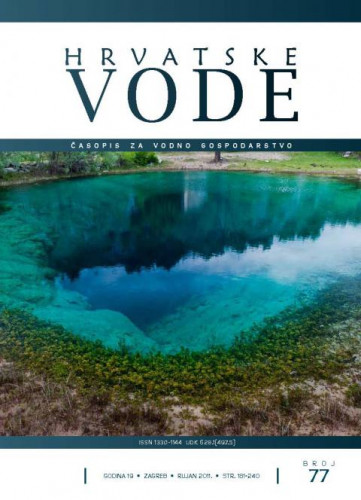Estuarij Zrmanje je visokostratificirani sustav s oštrom haloklinom koja dijeli bočati od morskog sloja, te različite zajednice pelagičkih organizama. Haloklina nakuplja suspendirane čestice i pokazuje ljetni potpovršinski temperaturni maksimum. Izmjena vode iznad halokline zimi traje jedan do dva dana, što je šest puta kraće vrijeme nego u susjednom estuariju Krke. Dotok Zrmanje veći od 50 m3 s-1 uzrokuje pomicanje čela estuarija za dva km nizvodno od Jankovića buka, pa je taj dio estuarija ekstremno ekološki nestabilan. Razvoj fitoplanktona ovisi o stabilnosti halokline, dotoku hranjivih tvari rijekom Zrmanjom i vruljama, brzini izmjene vode u estuariju i mikrobiološkoj regeneraciji hranjivih soli. Oligotrofni karakter estuarija pokazuje velika prozirnost (dubina eufotičkog sloja veća od 5 m), nedostatak hipoksije niti anoksije, te rijetke pojave cvjetanja fitoplanktona. Negdašnja privredna aktivnost kod Obrovca povremeno ostavlja tragove zagađenja u estuariju..; The Zrmanja estuary is a highly stratified system with a sharp halocline separating the brackish layer from the marine layer and different communities of pelagic organisms. The halocline accumulates suspended solids and shows the maximum of summer subsurface temperature. In winter, water exchange above the halocline lasts from one to two days, which is six times shorter than in the neigbouring Krka estuary. The Zrmanja water inflow of over 50 m3 s-1 causes movement of the estuary foreshore by 2 km downstream the cascade of the Jankovića buk, which makes this part of the estuary extremely environmentally unstable. Phytoplankton development depends on the halocline stability, nutrient inflow from the Zrmanja River or submarine springs, velocity of water exchange in the estuary and microbiological regeneration of nutrient salts. The estuary's oligotrophic character is proved by high transparency (depth of eutrophic layer of over 5 m), absence of both hypoxia and anoxia and rare occurrences of phytoplankton blooms. Former economic activity near Obrovac occasionally leaves traces of pollution in the estuary.
Sažetak
Dio sveska

